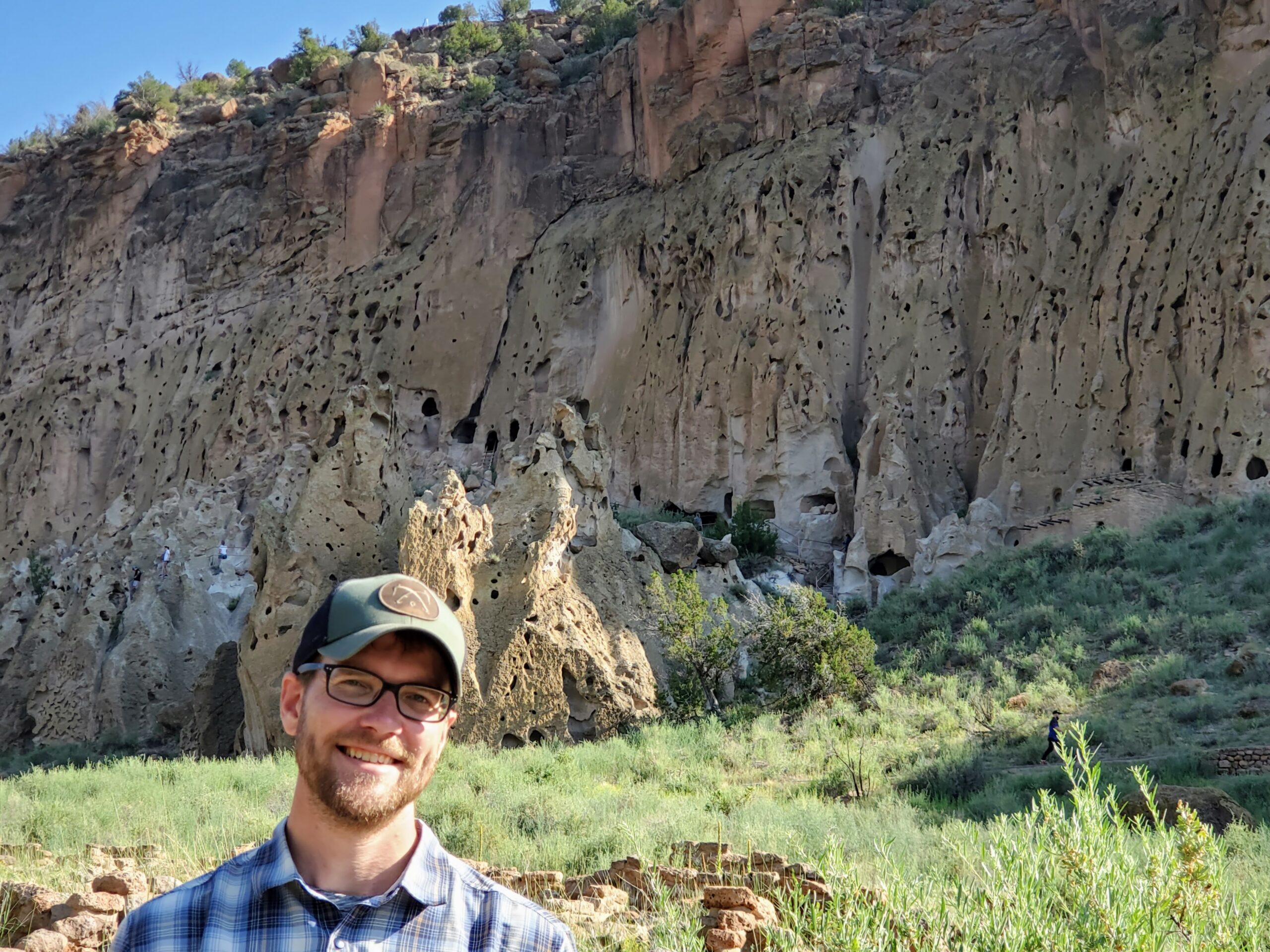Student Highlights: Greg Stark
— MEET GREG —
Class: Graduate Student
Major: Geophysics
Greg Stark is a Ph.D. student at the University of Wyoming in the Department of Geology & Geophysics. Greg earned his B.S. in Geology from the University of Iowa in 2007, during which he studied magma degassing at Mt. St. Helens as part of his honors thesis.

After earning his B.S., Greg spent nine years working in the environmental consulting industry, primarily working on hazardous waste remediation projects. He is excited to have returned to graduate school to pursue an academic career in geologic research. In his free time, Greg enjoys many outdoor activities, including rock climbing, mountain biking, snowboarding, cross-country skiing, and backpacking.
— GREG’S RESEARCH —
Greg’s research focuses on how large-scale, continental volcanoes form and evolve over time. These types of volcanoes have complex deposits of volcanic rocks, often deposited over hundreds of thousands or even millions of years. Over this time span, the compositions of lavas erupted at the surface can be highly variable. Compositions can range from primitive basalts, representing melts coming nearly directly from the mantle, to highly evolved rhyolites, which form through a combination of different physical and chemical processes in the Earth’s crust. This could include melting of rocks, mixing together of different magma bodies, incorporation of the Earth’s crust into magmas, crystallization, etc.
Greg analyzes different isotopes—atoms of the same element that vary in their number of neutrons—within volcanic rocks that act as tracers or fingerprints of these physical processes. With this and other geochemical data, Greg is investigating the evolutionary histories of the Jemez Volcanic Field in New Mexico, Chimborazo volcano in Ecuador, Summer Coon volcano in Colorado, and Nyiragongo and Nyamulagira volcanoes in the Democratic Republic of the Congo.
The beautiful and rugged volcanic terrain of the northern Jemez Volcanic Field. The small hills covered in dark green scrub brush are a series of small cinder cones formed nearly 10 million years ago. The mountains in the background form the rim of the 14-mile-wide Valles-Toledo caldera complex, produced during two massive explosive eruptions in the recent past.
ABOUT STUDENT HIGHLIGHTS
Every year, we award fellowships to graduate and undergraduate students attending the University of Wyoming or one of Wyoming’s community colleges in order to provide them with the opportunity to do “real” research. Occasionally, we feature one of these students and their research on this blog. For more information about our student fellowships, visit our College Programs page.


